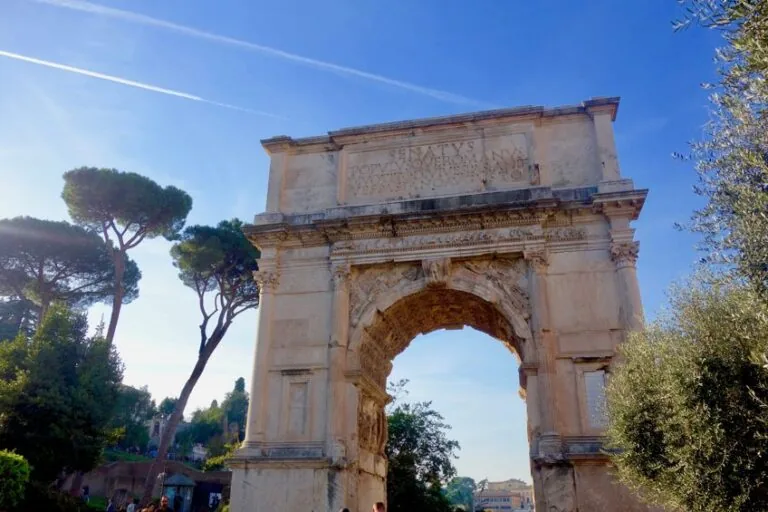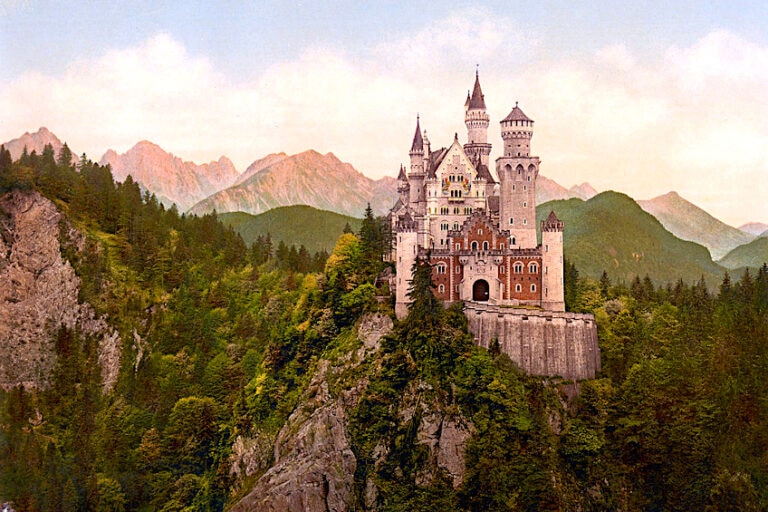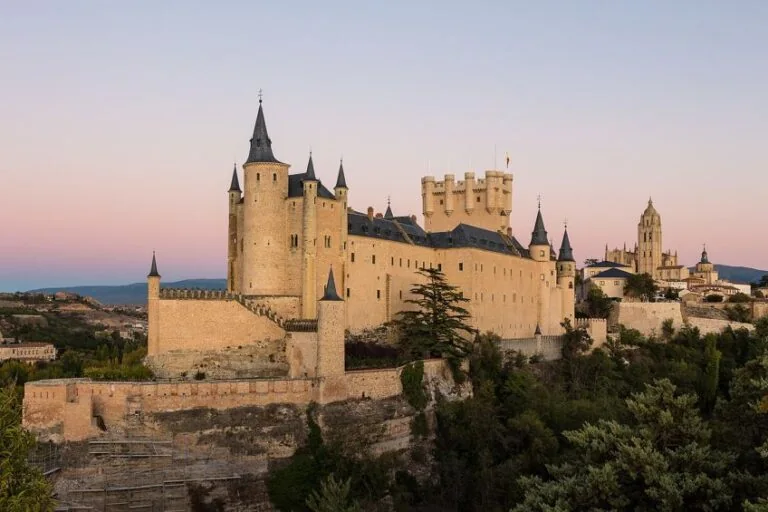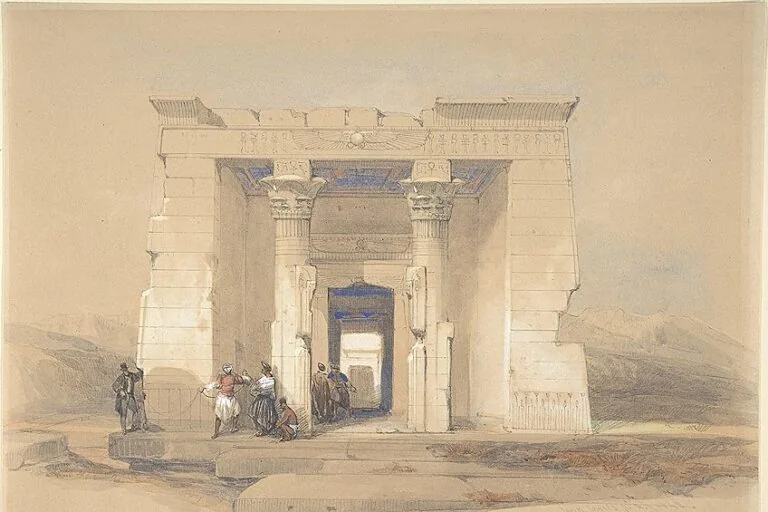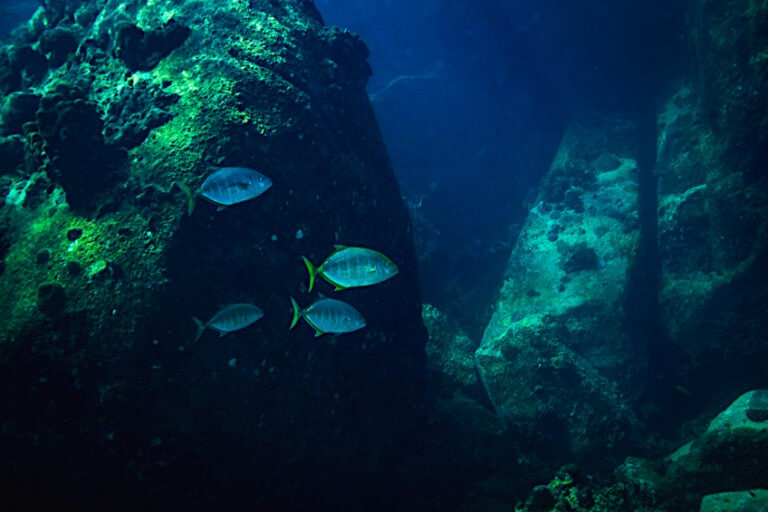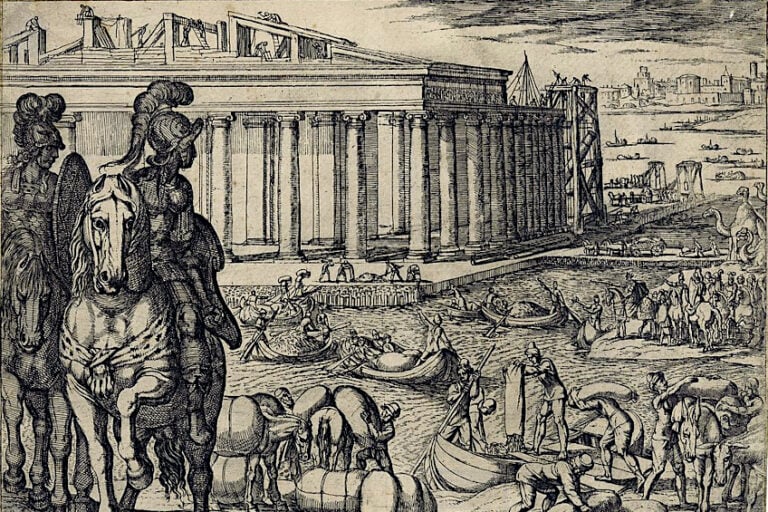Ajanta Caves – An Exploration of the Ajanta Cave Paintings
These days, it’s easy to forget that we were not the first generation to build monuments. Ancient people spent lifetimes carving and sculpting monuments in memory of their societal achievements, ancestors, and conquests. The seven wonders of the world are a testament to this fact, but none are quite as awe-inspiring as the Ajanta caves in India. The Ajanta caves have been around for a very long time, and their existence stands as a monument to the perseverance of the human spirit, and what can be accomplished through cooperation and a common goal. That being said, let’s have a look at what the Ajanta caves are, why they were made, who created them, where they are located, and what state they are in today!
What Are the Ajanta Caves?
| Architect | Commissioned by the Vakataka Kings |
| Dimensions (m) | 35.7 × 27.6 |
| Date of Construction | 1st and 2nd centuries BCE |
| Location | Maharashtra, India |
| Type of Architecture | Ancient Buddhist rock-cut architecture |
| Stylistic Influences | Ancient Indian temple designs |
| Age | 2400 years old |
The Ajanta caves are a cave system consisting of 30 individual caves that were constructed between the 2nd century BCE and 480 CE. The caves are located in the Aurangabad district of Maharashtra in the country of India. While the caves themselves are quite the attraction, the paintings inside caves are the real draw, as they are some of the oldest examples of ancient Indian art.
The paintings on the cave walls are regarded almost universally as true masterpieces of Buddhist religious art, which comes as no surprise considering that they are particularly expressive emotionally, illustrating the emotions of the figures through gestures, poses, and forms chosen by the artists. This is particularly interesting for the period in which these paintings were created.
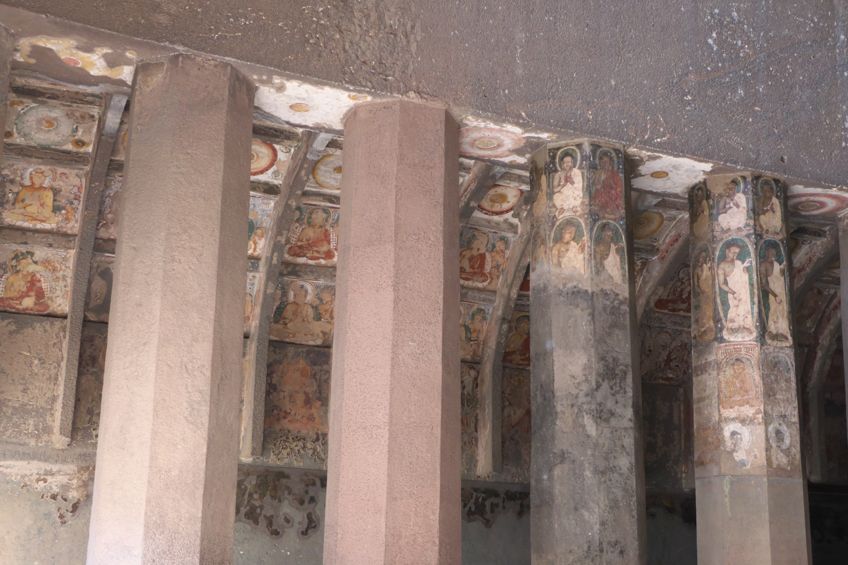 Ajanta Caves Murals (1st and 2nd centuries BCE); Dinesh Valke from Thane, India, CC BY-SA 2.0, via Wikimedia Commons
Ajanta Caves Murals (1st and 2nd centuries BCE); Dinesh Valke from Thane, India, CC BY-SA 2.0, via Wikimedia Commons
According to the historical record, the caves were created in two distinct phases, the first of them being constructed in the second century BCE and the last of them being dug out between 400 CE and 650 CE. The caves are understandably an object of great pride for the Indian nation and therefore are under the protection of both the Archaeological Survey of India, and have been declared a world heritage site by UNESCO back in 1983.
People around the world learned about the Ajanta caves during their travels, which makes sense considering that they’re rather difficult to miss. In fact, the caves are mentioned in the memoirs of Chinese Buddhist travelers. British colonists also discovered the cave system for themselves while on a hunting expedition all the way back in 1819, as noted by Captain John Smith. The caves are located on the face of a u-shaped gorge that forms part of the river Waghur. The river is located on the Decan Plateau and is the home of numerous waterfalls which can be heard when the river is high.
The sound of these waterfalls crashing into the river below can be heard from the cave systems as well, providing an air of natural serenity.
What Are the Ajanta Caves Used For?
The Ajanta caves are beautiful, but have you ever wondered what they are used for? The Ajanta caves function as a monastery for various Buddhist traditions. The caves were carved out of a solid rock wall and allowed patrons to present offerings to various deities associated with the location. The Ajanta Cave painting reflects this application, as there are many depictions of Buddha in various previous incarnations (past lives)
The temple also serves as a place of remembrance of various Buddhist tales of various local tales, such as those from Aryasura’s Jatakamalaf. These are communicated through illustrations that can be found throughout the cave complex, in addition to various statues that represent a number of Buddhist deities.
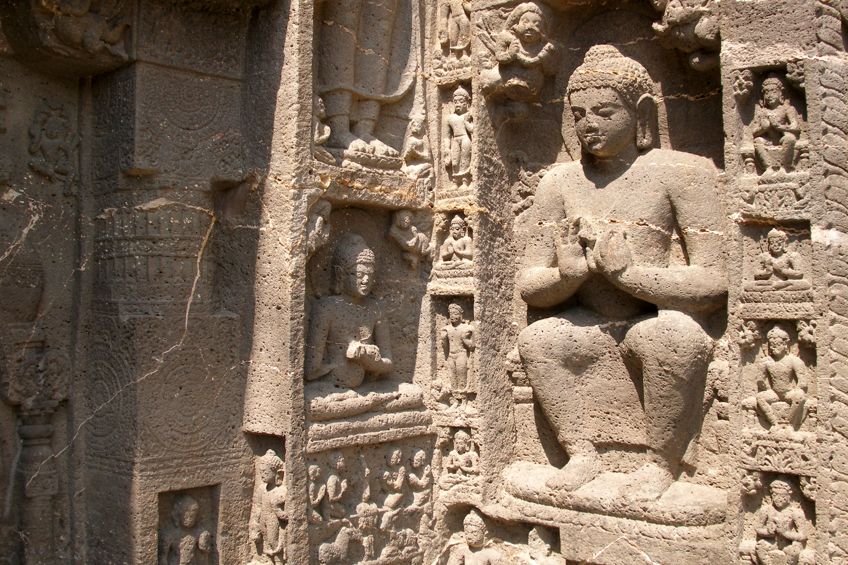 Buddha Carving at the Ajanta Caves (1st and 2nd centuries BCE); © Vyacheslav Argenberg / http://www.vascoplanet.com/, CC BY 4.0, via Wikimedia Commons
Buddha Carving at the Ajanta Caves (1st and 2nd centuries BCE); © Vyacheslav Argenberg / http://www.vascoplanet.com/, CC BY 4.0, via Wikimedia Commons
According to text related to the caves, their location initially served as a safe haven for monks during monsoons, which explains its fortitude and the presence of religious iconography inside the cave systems. In addition to a monsoon refuge, the location also served as a resting place for traveling merchants and those who sought shelter on pilgrimage.
Throughout the modern world, Indian culture has become well known for the vibrant colors and clothing associated with both its clothing and artwork. The Ajanta cave paintings are no different, but what sets them apart is that they are the largest collection of ancient Indian murals found to date.
The majority of these murals can be found in caves one, two, 16, and 17 of the cave complexes.
Where Are the Ajanta Caves Located?
The Ajanta caves are one of two famous caves systems present in the region of Maharashtra, and functions as a major tourist attraction in the area. The caves are located about 59 KM from the nearest major city (Jalgaon) and about 350 KM from the city of Mumbai. The Ajanta caves and the Elora Caves are the two major tourist attractions in this part of India and hold great socio-cultural importance to the people of the region, embodying their history as a people and as a nation.
One might think that the caves being attached to a mountainside would make them difficult to access, but this is far from the case. The caves can be accessed by various means of transportation. According to most estimates, if you were to have a good tour guide you would be able to visit both the Ajanta caves and the Elora caves on the same day!
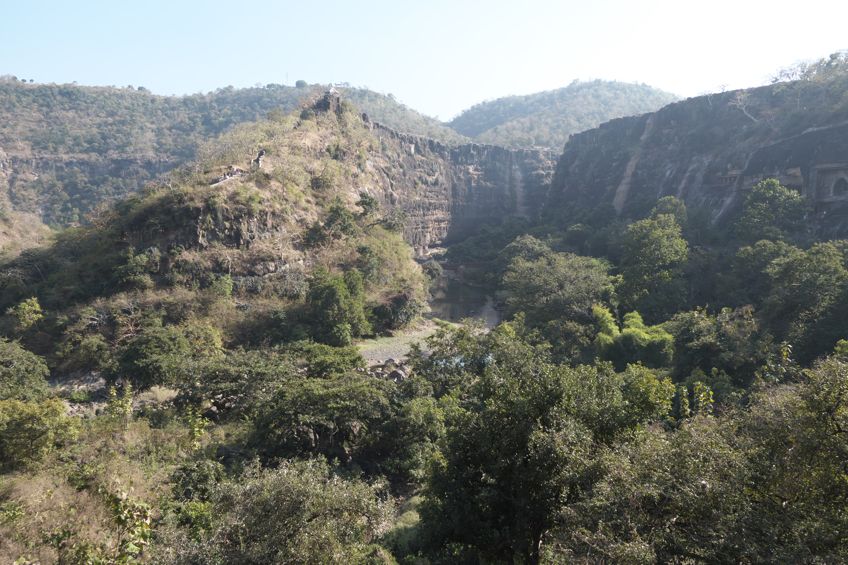 The Ajanta Caves (1st and 2nd centuries BCE); Dinesh Valke from Thane, India, CC BY-SA 2.0, via Wikimedia Commons
The Ajanta Caves (1st and 2nd centuries BCE); Dinesh Valke from Thane, India, CC BY-SA 2.0, via Wikimedia Commons
While both cave systems are incredible to behold, the Ajanta caves have become better known for their artwork than their architecture. The Elora caves, on the other hand, have become known for their architectural design due to the fact that their temple was carved from the top down, from a single piece of rock mind you.
This being said, these caves are relatively easy to find and it’s fairly easy to find a guide willing to show you around. The surrounding environment does tend to get exceedingly hot at both locations, so it’s recommended to always wear a hat and stay well hydrated while touring either of these locations.
The styling of the Ajanta caves is shared by other cave systems throughout India as well, including the Aurangabad caves, the Elephanta caves, and the Shivleni caves.
History of the Ajanta Caves
As we mentioned previously, the Ajanta caves were made in two distinct phases, the first was created between the second and first century BCE, and the additions were made sometime after that. According to official records the caves consist of 36 foundations that have been individually identified, of which 29 individual caves have been recognized and numbered.
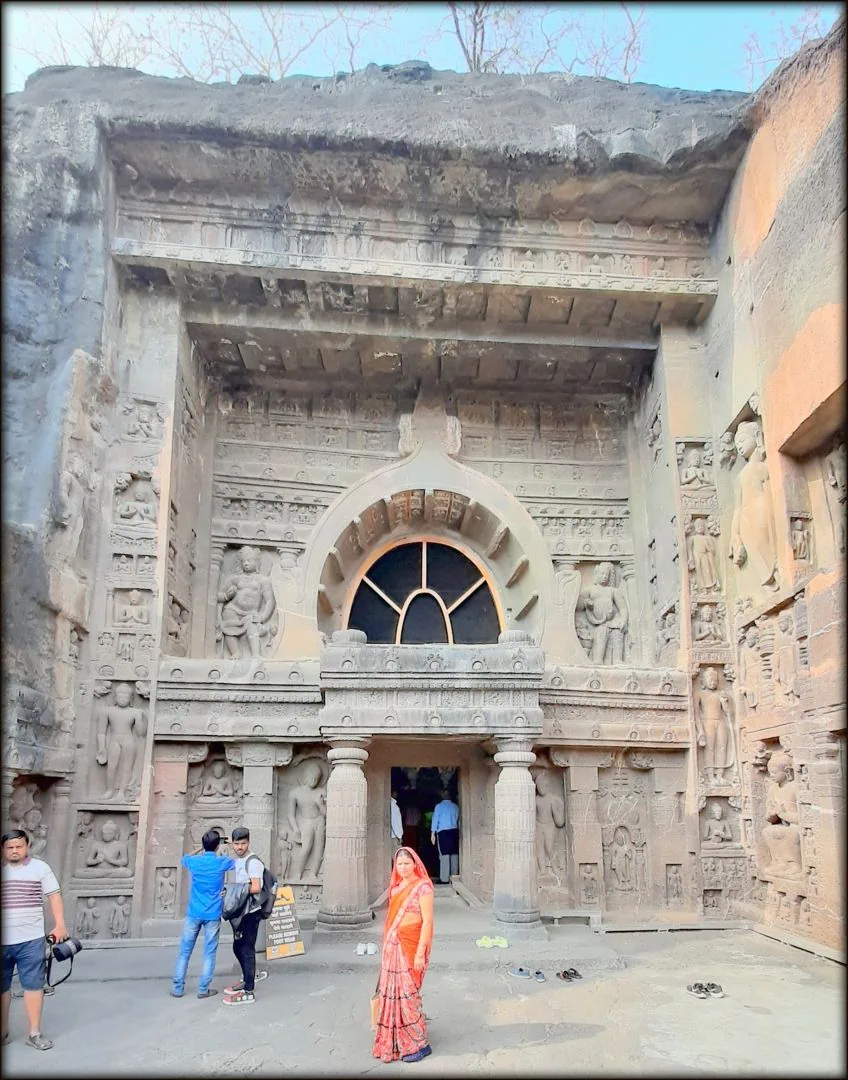 The Fifth Ajanta Caves (1st and 2nd centuries BCE); SUPADHYAYK, CC BY-SA 4.0, via Wikimedia Commons
The Fifth Ajanta Caves (1st and 2nd centuries BCE); SUPADHYAYK, CC BY-SA 4.0, via Wikimedia Commons
Originally, the caves were explored, identified, and numbered as caves 1 through 15. Upon further investigation, it was found that there were various offshoot caves between each numbered cave, which were marked with alphabetical indicators such as 15-A, 16-B, and so forth. Please note that the numbering of the caves is not chronological, but rather a convenient means of identification.
The First Caves (Satavahana Period)
The earliest group of the Ajanta caves are marked as caves 9, 10, 12. 15, and 15-A. These caves are best known for their depiction of the Jatakas, a body of works centered around the birth of both Buddha and Gautama in both human form and animal form. Experts believe that these paintings were made sometime between 100 CE and 100 BCE during the turn of the century, and were believed to have been commissioned by the Satavahana Dynasty. The first of these caves (9 and 10) are considered to be Stupa, which are essentially mound-shaped temples that are used for meditation.
These structures usually contain religious relics that assist occupants within their meditative state and are essentially places of spiritual and personal enlightenment for those who follow the teachings of Buddha.
Caves 9 and 10 have been constructed in the chaitya-griha formation which is essentially long hallways with a domed point of focus at one end. The remaining caves (12 through 15-A) were constructed in the vihāras layout, and while they might differ in style and shape, these caves all tend to emphasize the Stupa instead of actual scripture. According to experts, these first caves were constructed over a long period of time and only once they were completed the temple complex was used but left idle in terms of renovations and additions for a very long time. During this time many pilgrims visited the site, and their travels and visitations were documented in their journals.
The Second Cave Set (Vākāṭaka Period)
The second set of caves was made long after the first set of caves was established and used. Prof. Walter Spink has stated that the construction of the second set of caves began in the late fifth century (460 CE – 480 CE) under the rule of the Vākāṭaka dynasty which served under the rule of Emperor Harishena. This claim was greatly disputed when it was initially published, but these days it is widely accepted by both archaeologists and scholars alike.
Phase two of the cave’s construction is attributed to the theistic Mahāyāna (the overall Buddhist belief system). The second set of caves consists of caves systems 1, 8, 11, 19, and 19 and are thought to have been created as extensions of some of the earlier cave systems, but this has never been confirmed. The other set of caves ranging from 19 to 29 is all constructed in the chaitya-grihas style, while the remaining are all in the viharas formation (essentially a courtyard chamber configuration).
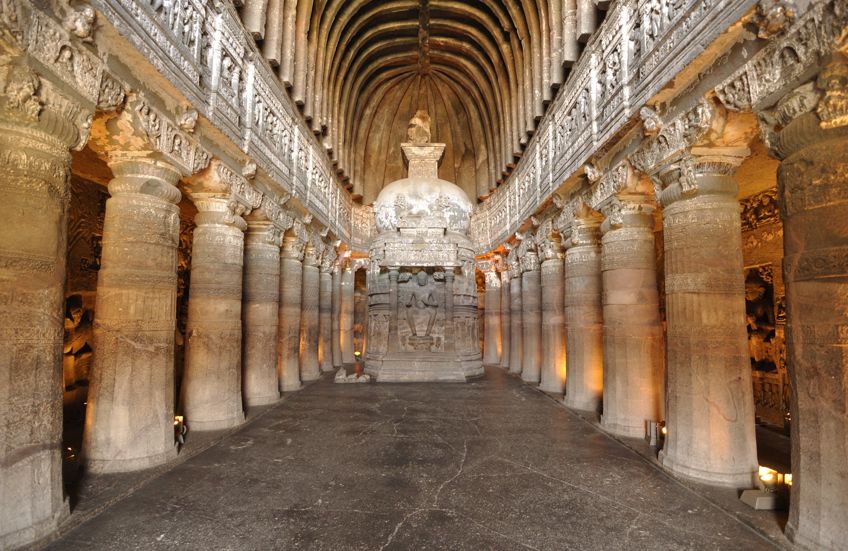 Ajanta Caves 26 (1st and 2nd centuries BCE); Dey.sandip, CC BY-SA 3.0, via Wikimedia Commons
Ajanta Caves 26 (1st and 2nd centuries BCE); Dey.sandip, CC BY-SA 3.0, via Wikimedia Commons
This second set of caves was more intricately created, as can be seen by the additions being constructed in the viharas configuration. During the time in which the newer caves were constructed, restorations were made to the original ones and some of their murals were touched up as well due to erosion over time. Although Prof. Spink’s theories about the cave are widely accepted, the Indian Archaeological survey website still uses the traditional timeline of construction, which can create a bit of confusion. Regardless, Spink’s findings indicate that the wealthy benefactors abandoned the expansion of the caves toward the end of the 5th century, but the use of the caves continued regardless. Even when they were not in use as frequently as they were due to political infighting in the region, the caves were still quite the attraction for devout Buddhists, pilgrims, and travelers alike.
In fact, this was confirmed by a Chinese traveler named Xuanzang, as well as a 17th-century text known as Ain-i-Akbari that was written by Abu al-Faz.
Colonisation of India
Even before India was officially colonized there was significant British influence in the region. A good example of this influence is the presence of a British officer by the name of John Smith who came upon the caves on the 28th of April 1918. The officer of the 28th Cavalry division was on a mission hunting tigers when happened upon cave 10 that’s entrance had been overrun with vines.
Upon discovering the entrance to cave 10 the hunting party made their way to a local village where they asked the villagers to bring various tools to hack away at some of the plant life that had overgrown the entrance to the cave. Once they arrived at the cave, Smith stood on a collection of rubble and inscribed his name on a bodhisattva statue (representing a person on their path to awakening).
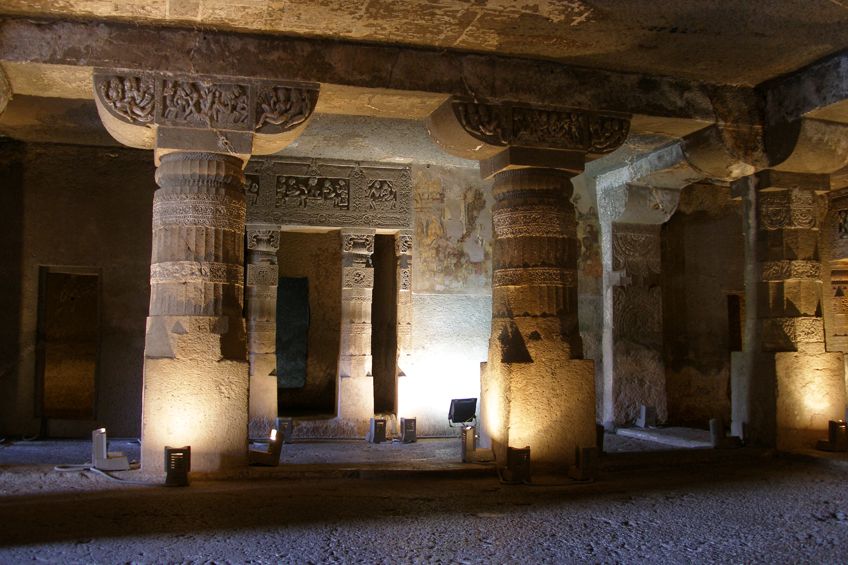 The Ajanta Caves (1st and 2nd centuries BCE); © Vyacheslav Argenberg / http://www.vascoplanet.com/, CC BY 4.0, via Wikimedia Commons
The Ajanta Caves (1st and 2nd centuries BCE); © Vyacheslav Argenberg / http://www.vascoplanet.com/, CC BY 4.0, via Wikimedia Commons
This inscription cannot be seen at eye level thankfully, but the vandalism has been noted historically. This being said, in the following years the caves had become quite the attraction to tourists and historians alike. This attention led to many wanting to duplicate the beautiful murals in an effort to share their beauty with the rest of the developed world.
Increasing Popularity of the Caves in the Modern World
This attention led to the Bombay Asiatic Society being formed in 1848, which undertook a mission to clean, tidy, and preserve the paintings and the cave systems as a whole. This creation of this society highlighted the historical and cultural significance of the cave systems, which would eventually lead to the formation of the Archaeological Survey of India.
The cave systems were (thankfully) not under the direct control of the British colonial powers but rather part of the princely estate. This estate was under the control of an Indian ruler who communicated and implemented instructions from the colonial powers, making the area something of a pseudo-sovereign state.
Protection and Restoration of the Caves Under India’s Independence
In the early 1920s, the cave site was converted into a full-on museum. Mir Osman Ali Khan a leader of the sovereign state saw this through, even going as far as to create a dedicated bus route to the caves that would allow visitors to be couriered at a small fee. However, due to mismanagement of the site and the location being over-visited, the site saw degradation and minor damage.
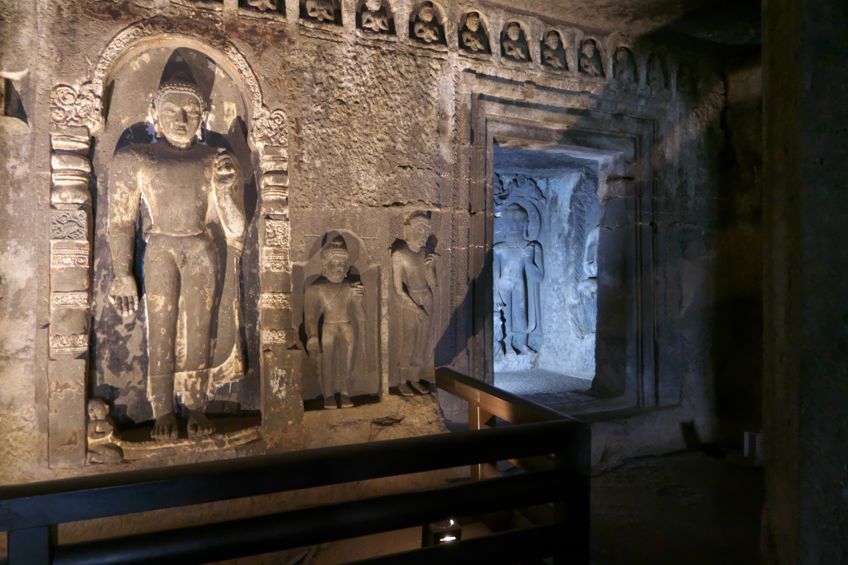 The Ajanta Caves (1st and 2nd centuries BCE); Dinesh Valke from Thane, India, CC BY-SA 2.0, via Wikimedia Commons
The Ajanta Caves (1st and 2nd centuries BCE); Dinesh Valke from Thane, India, CC BY-SA 2.0, via Wikimedia Commons
Thankfully, once India obtained its independence, their new government built an arrival, transportation, and departure center from the sites. The new infrastructure offered ample parking for visitors and the buses that traveled all the way up to the caves ran on a strict schedule to ensure that the flow of visitors was consistent and limited. The caves have been restored and maintained many times over the years, but due to the high influx of visitors during tourist seasons, the caves have seen degradation over time. To mitigate degradation and limit the number of people inside the caves at any given time, overseers have created replicas of the paintings at the visitor’s center, which can be viewed more easily, and without the need to move on as quickly.
Ajanta Cave Description
The caves of Ajanta consist of a type of rock that has come to be known as a flood basalt. Essentially, this type of rock forms in an area that has been subject to consecutive volcanic eruptions. The rock is somewhat consistent in density and integrity, which meant that those who carved the caves needed to try a new approach to carving out the various caves.
Due to how they are formed the rocks tend to be layered horizontally, this means that the best method of approach is either to work from the bottom upwards or from the top downward, which is exactly how they went about it. Excavation began by tapping a narrow tunnel down into the rock, and tapering it outward slowly until a dome-like shape remained.
As for the sculptures and paintings inside the cave, it is believed that they were created by the same group of artists, with the pillars and sculptures being constructed first and the paintings being added to the walls of the structures last. The same goes for the entrance, which is located at the apex of the horseshoe-shaped temple complex.
The entrance to the temple complex has an elaborately carved gateway that is beset on both sides by elephants, much in the same way that many other temples from this era are. Accompanying these elephants are representations of snakes which are believed to protect the temple and its occupants from danger.
The temple complex is immense and therefore required quite a bit of money to construct, and many artists to furnish them with the beautiful statues and paintings we see today. These funds came from a number of donors over the years, and in return, these benefactors were immortalized by having their names carved into the temple walls, in addition to spiritual credit in the Buddhist afterlife.
Monasteries Rooms of the Ajanta Caves
As we mentioned previously, the primary purpose of the caves of Ajanta is to serve as a place of spiritual importance. Worship, and offering. This is why the majority of the larger caves are square in shape, with shrines only being added during the second period of construction. These shrines were added to the rear ends of the room as they were retrofitted many years after initial construction.
These shrines are typically centered around large statues of Buddha, who has been surrounded by various other deities in detailed reliefs and carvings. Like all religions and cultures, Buddhism evolved over time, which is evident in the additions made to the cave systems as well as the additions of the shrines to these places of worship, which are sometimes referred to as monasteries.
 The Ajanta Caves (1st and 2nd centuries BCE); Dinesh Valke from Thane, India, CC BY-SA 2.0, via Wikimedia Commons
The Ajanta Caves (1st and 2nd centuries BCE); Dinesh Valke from Thane, India, CC BY-SA 2.0, via Wikimedia Commons
We mentioned previously that the style of these worship spaces changed during the second phase of the construction phase. This came to be known as viharas, which essentially means a large square chamber. This chamber has a hallway on all four of its sides (forming corridors), which if one walks through from the central square chamber gives way to small, square rooms.
At the back of each of these, one can find the statue of Buddha as well as some stone carvings of the deities associated with the primary Buddha. In one instance, you can find two spaces arranged in the viharas on top of one another. The spaces are separated by a ceiling and staircase allowing access to both areas and are unique to the 16th cave.
The Halls of Worship of the Ajanta Caves
The second type of temple structure that you can find inside the caves has come to be known as chaitya-griha. These spaces are essentially long hallways that have been lined on each side with intricately carved pillars. The center of the hallway functions as a nave, while the pillars on each side of the nave create a space between the nave and barrier walls, forming a corridor on each side of it.
At the end of the nave is the stupa which sits underneath the apse of the hallway. The stupa is surrounded by pillars, which are typically walked around during worship or meditation. These structures tend to have a common design theme in terms of space but can differ in the use of materials, natural light, and available space.
There are four completed worship halls inside the temple complex that have been discovered to date.
The first is in caves 9 and 10, which are believed to be the earliest iterations of these structures. The later versions found in caves 19 and 26 include a ribbed pattern in the roofs of their naves, as well as spaces behind the stupa shrine, allowing one to walk behind them.
The latter of the two halls seem to have been constructed as replicas of the first halls, as their ribbed ceilings are purely aesthetic, whereas the former two appear to have been created with actual wooden framing. Additionally, the later caves have the representation of the Buddha sitting in one (cave 19) and standing in the other (cave 26).
The Ajanta Cave Murals
Most of the Ajanta cave murals are depictions of the Jataka tales, which are essentially a series of stories that describe the previous lives and subsequent reincarnation of Buddha through the ages. These murals are essentially illustrations of the various stories and fables contained in the Hindu and Jain texts. These murals detail the sacrifices and lessons learned by the Buddha throughout the course of their many lives. It also illustrates how the Buddha was reincarnated as both human and animal on several occasions and serves as a great way of communicating the concept of reincarnation to those who are interested in learning about it.
Unlike most cave art, their paintings here were relatively well taken care of, and as a result, there are paintings inside both the earlier and later built cave systems. Some of the paintings are reproductions of famous Indian paintings of eras long past and serve as a great example of how artists of this time period had mastered this fluid style of painting.
According to Dr. James Harle who was once the Keeper of the Department of Eastern Art at the Ashmolean Museum, four of the later-built caves contain the largest and most accessible of the mural works found in the cave. According to this expert, these are good examples of not only the Gupta era of Indian art but Indian art as a whole. The most famous of the paintings are found in caves 1, 2, 16, and 17 and are divided into two distinct stylistic groups. The murals in caves 16 and 17 are thought to be earlier works as they feature more conservative imagery, whereas the (believed) later works found in caves 1 and 2 embrace the human form and natural beauty, which is believed to be the result of either more experienced artists or artists from another region.
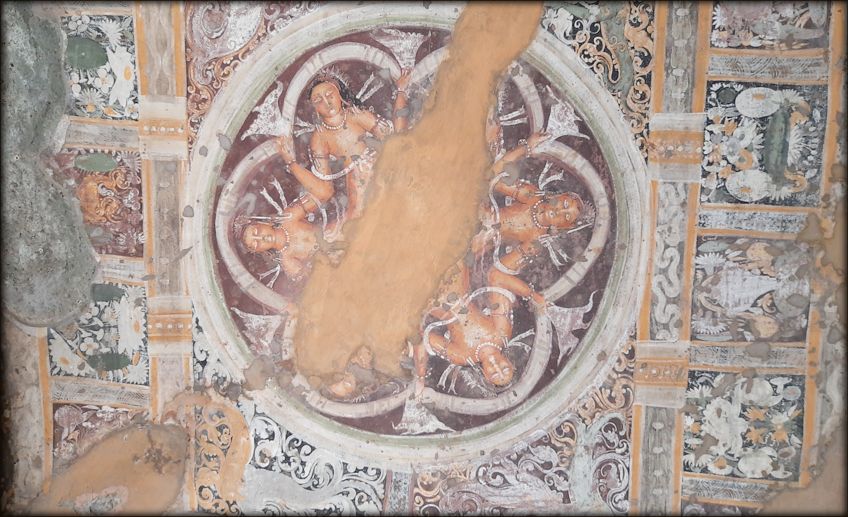 Paintings in Ajanta Caves (1st and 2nd centuries BCE); SUPADHYAYK, CC BY-SA 4.0, via Wikimedia Commons
Paintings in Ajanta Caves (1st and 2nd centuries BCE); SUPADHYAYK, CC BY-SA 4.0, via Wikimedia Commons
All of the paintings were painted in dry fresco, which essentially means that paint was applied on dried plaster as opposed to wet plaster. Their overall style and the scenes that are depicted seem to have been heavily curated, presumably by the sponsors involved. All of the paintings possess a common composition, starting with a figure(s) at the center and having the scene develop outwards from this point.
Paintings can be found on both the walls and the ceilings of the cave systems, showing excellent use of available space where possible. Works on the cave ceilings are intricate motifs that appear to have been inspired by sculpting practices. Most of the later paintings appear to have been done alongside construction efforts, as there appear to be areas that were plastered for additional murals to be added but were ultimately abandoned due to unknown reasons.
Now that you know what the Ajanta caves are, where you can find them, when they were built, what you can find inside them, what they were used for, what the Ajanta cave murals are, and what makes them so special, it’s time for you to get out there and put your newfound knowledge to the test! Ancient Indian art is quite a sight to behold, so if you have the opportunity, we highly recommend you giving these caves and their paintings a look.
Frequently Asked Questions
What Kind of Art is in the Ajanta Caves?
The Ajanta caves contain many murals and sculptures that have been made in the ancient Indian art style. Most of the paintings inside the caves are believed to have been created within the 5th century CE. The works are highly expressive and contain a number of vibrant colors, as well as representations of Buddha and other deities.
What Are the Major Characteristics of Ajanta Murals?
The paintings in the Ajanta caves are all created in the ancient Indian art style. The majority of works in this style are centered around a single focal point as the scene expands and develops outward. Bright colors and a dry fresco technique permeate virtually all of the paintings in the cave system.
What Is the Main Theme of Ajanta Art?
The main themes of the Ajanta cave paintings are the Jataka stories. These stories depict the Buddha through his many lives and reincarnations. They show how the deity is brought back to life as both animals and human beings, and also feature other deities from time to time.

I am deeply passionate about history and am constantly fascinated by the rich and complex stories of the past. As the editor-in-chief of learning-history.com, I have the opportunity to share this passion with a wide audience through the creation and distribution of engaging and informative content about historical events, persons, and cultures. Whether it’s through writing articles and blog posts or creating videos or podcasts, I strive to bring the past to life in a way that is both accurate and enjoyable. My expertise in history, combined with my strong writing and communication skills, allows me to effectively communicate complex historical concepts and make them accessible and interesting to a wide range of readers. I am truly grateful for the opportunity to share my love of history with others through my work on learning-history.com.

